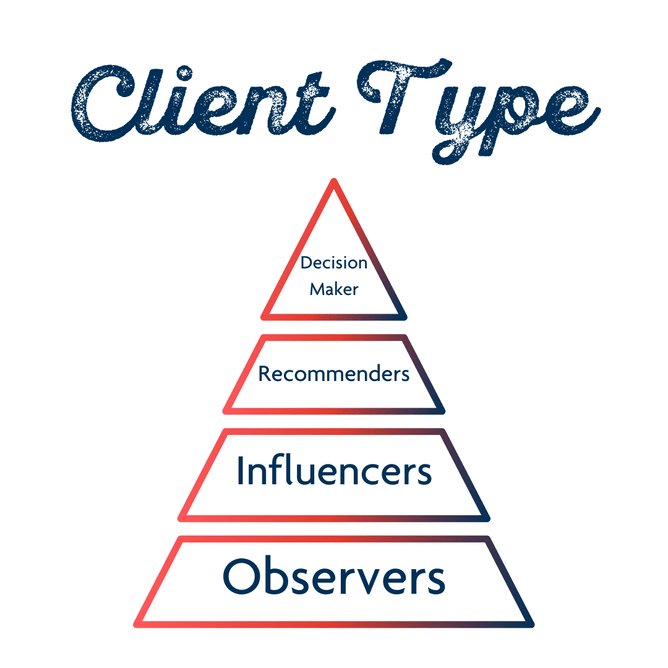As a content creator you need to wear many hats and internally channel many personalities. It takes a special kind of human to be able to change these hats often - something our social media and community manager’s have mastered the art of. So for us, it’s no surprise we constantly get asked the question by our community ‘How do I write different content for different audiences on our social media channels?’
Often people think they need different accounts to talk to different audiences for fear of offending one by communicating to the other but that is not the case! In this blog we’re going to explain how, by understanding your different customer persona’s, you can write effective, engaging and targeted content on your current social media accounts WITHOUT the need for separate accounts.
Develop your client persona/s
When was the last time you generated a persona card for your brand’s audience?
Often, when we discuss with our clients what their audiences ‘look-like’ a dazed and confused look comes across their faces. With no disrespect to our clients of course, but often most haven’t had the time or possess the knowledge to able to develop persona cards for their brand. Don’t worry we gotcha back!
HOT TIP: If you want a quick and easy tool to generate one check out HubSpot’s persona generation tool.
For those who want to understand more about this essential communication and marketing tool….read on.
When it comes to knowing your audience/s you want to possess the ability to be able to describe this person to anyone and everyone who will listen, as if they’re your best friend. Most of the time your business will never just have one customer, there will be multiple, and you need to be able to understand each as intimately as the other, so you can develop relevant messages for each.
Here’s some high level categories you you need to know to create a persona card:
- Age: we recommend a 5yr - 10yr range ONLY
- Gender: male/female/non-binary
- Location: regional, national, international
- Industry role: Marketing Manager, Agribusiness consultant, Dairy Farmer etc.
- Key role measureables: Brand sentiment, Leads etc.
- Interests: What do they read? Watch? What’s their family situation? Plus many more
- Customer type: Observer, Recommender, Influencer, Decision-maker?
- Key messages: 3-5 key strategic messages a persona. More on this below.
The interests are a really key part of persona creation, and we’ve found they’re often over looked. This is where you really get to know the person - this is your chance to describe that ‘best friend.’ It’s like you’re taking a deep dive into their personal life and really starting to understand what makes them tick. Knowing these interests will serve you well later down the track, allowing you to generate interest based content or a targeted advertising campaign based on said interests.
You might be asking by now why targeting someone who loves rugby, fishing or gin is going to help with messages such as climate change but what you’re trying to do is find a common set of interests among your target audience to be able to appeal to their emotive human side with your content.
It also allows you to develop your brand voice in a way that appeals to this group of people by finding a common language among the customer group.
Want help developing your client persona’s and brand voice? Our team can help. Give us a squawk.
Developing your key messages
Right, we now know our peeps intimately, but how do we communicate with them effectively?
Once you have your persona’s down pat you need to develop 3 - 5 key strategic messages you want to communicate. This is where knowing what ‘type’ of customer you’re communicating to comes in handy.
We use what we call a ‘Client Type Pyramid.’
Let’s take a look at an example of selling software as a service (SaaS) to a male customer base. There are two types of direct customers for this product: The business owner (Decision-Maker) and the User (Recommender). Each of these people have different needs and problems they want solved.
The decision-maker wants process efficiency, business profitability, to spend more time with the family and have work flexibility. Whereas the user wants clear visibility over their job schedule, be able to use the product 24/7 and have autonomy in their role.
Knowing these key messages, as well as the interests of each of these persona’s allows you to tailor the content to specifically talk to their needs and how you’re going to solve it.
Here’s a content example:
Managing all areas of your company effectively is vital for the long term success of your business, but it can often be stressful and overwhelming.
Did you know that investing in a Transport Management System could not only make that task much more manageable for you but also save you money?
In summary, you need to get to know who you’re communicating with intimately.
Developing your client persona’s means the whole marketing and communications, be that internal or external team members, can be on the same page with who they’re communicating too, and how.
Before you even launch a social media account this work needs to be done. If you need a hand reach out to our team….we’ll happily ride in the jumpseat with you to develop a plan.




